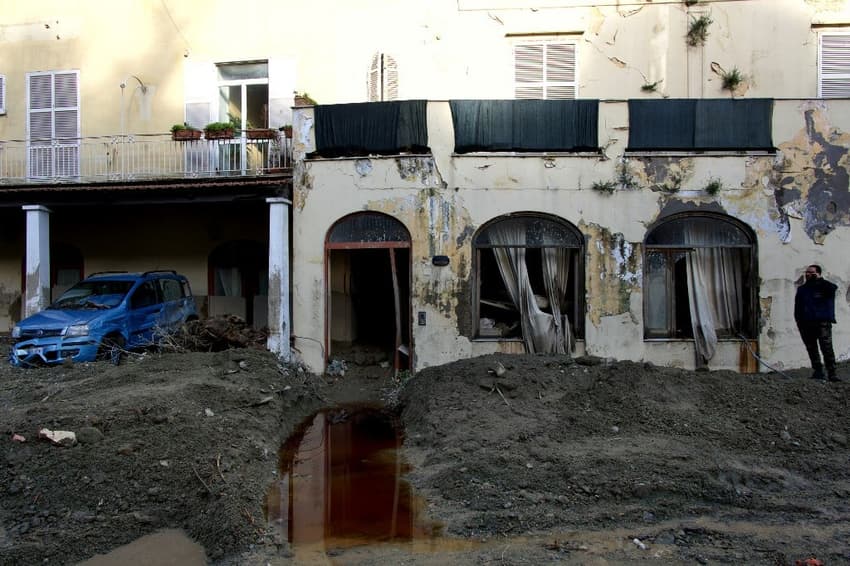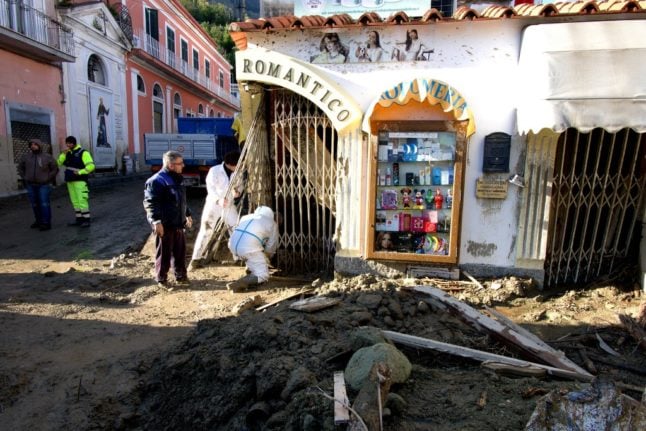Ischia landslide death toll rises to 11 as more bodies found

Rescuers on Thursday pulled another three bodies from the wreckage caused by a landslide on the Italian island of Ischia, bringing the death toll to 11, with one woman still missing.
The Italian fire service confirmed on Thursday afternoon that the bodies of two men and a woman had been found, and "the number of confirmed victims rises to 11".
"The search continues for the last woman" still missing, it wrote on Twitter.
The victims found on Thursday had not yet been identified.
A wave of mud and debris swept through the small town of Casamicciola Terme on Saturday following heavy rains, destroying houses and sweeping cars to the sea.
READ ALSO: Italy declares state of emergency after deadly Ischia landslide
Geologist Aniello Di Iorio told the Corriere della Sera daily there were "high risks" of further landslides on parts of Ischia, an island near Capri that is thronged with tourists in summer.
Experts said the disaster was caused by a fatal mix of deforestation, overdevelopment, and a lack of mitigation strategies.
 People outside a damaged restaurant in Casamicciola. Photo by Eliano IMPERATO / AFP
People outside a damaged restaurant in Casamicciola. Photo by Eliano IMPERATO / AFP
National Council of Architects head Francesco Miceli said it was "a tragedy foretold".
"This is not an isolated case, the risk areas are numerous and affect many regions of our country," he said.
Italy needs to "quickly define more incisive territorial control strategies (and) concrete intervention programmes, and disburse adequate resources", he said.
The disaster has also raised questions about the number of buildings constructed in areas that are at a high risk of flooding and landslides, often without permits.
On Sunday, the Italian government declared a state of emergency on the island and approved an initial allocation of two million euros in funding to address the aftermath of the landslide.
The peninsula, off Naples, is no stranger to states of emergency following earthquakes, volcanic eruptions or severe weather.
Casamicciola Terme, a spa resort of 8,000 inhabitants in winter on the lush island of Ischia, near Capri, was hit by an earthquake in 2017 that killed two people.
It was completely destroyed by a much more powerful earthquake at the end of the 19th century.
Comments
See Also
The Italian fire service confirmed on Thursday afternoon that the bodies of two men and a woman had been found, and "the number of confirmed victims rises to 11".
"The search continues for the last woman" still missing, it wrote on Twitter.
The victims found on Thursday had not yet been identified.
A wave of mud and debris swept through the small town of Casamicciola Terme on Saturday following heavy rains, destroying houses and sweeping cars to the sea.
READ ALSO: Italy declares state of emergency after deadly Ischia landslide
Geologist Aniello Di Iorio told the Corriere della Sera daily there were "high risks" of further landslides on parts of Ischia, an island near Capri that is thronged with tourists in summer.
Experts said the disaster was caused by a fatal mix of deforestation, overdevelopment, and a lack of mitigation strategies.

National Council of Architects head Francesco Miceli said it was "a tragedy foretold".
"This is not an isolated case, the risk areas are numerous and affect many regions of our country," he said.
Italy needs to "quickly define more incisive territorial control strategies (and) concrete intervention programmes, and disburse adequate resources", he said.
The disaster has also raised questions about the number of buildings constructed in areas that are at a high risk of flooding and landslides, often without permits.
On Sunday, the Italian government declared a state of emergency on the island and approved an initial allocation of two million euros in funding to address the aftermath of the landslide.
The peninsula, off Naples, is no stranger to states of emergency following earthquakes, volcanic eruptions or severe weather.
Casamicciola Terme, a spa resort of 8,000 inhabitants in winter on the lush island of Ischia, near Capri, was hit by an earthquake in 2017 that killed two people.
It was completely destroyed by a much more powerful earthquake at the end of the 19th century.
Join the conversation in our comments section below. Share your own views and experience and if you have a question or suggestion for our journalists then email us at [email protected].
Please keep comments civil, constructive and on topic – and make sure to read our terms of use before getting involved.
Please log in here to leave a comment.